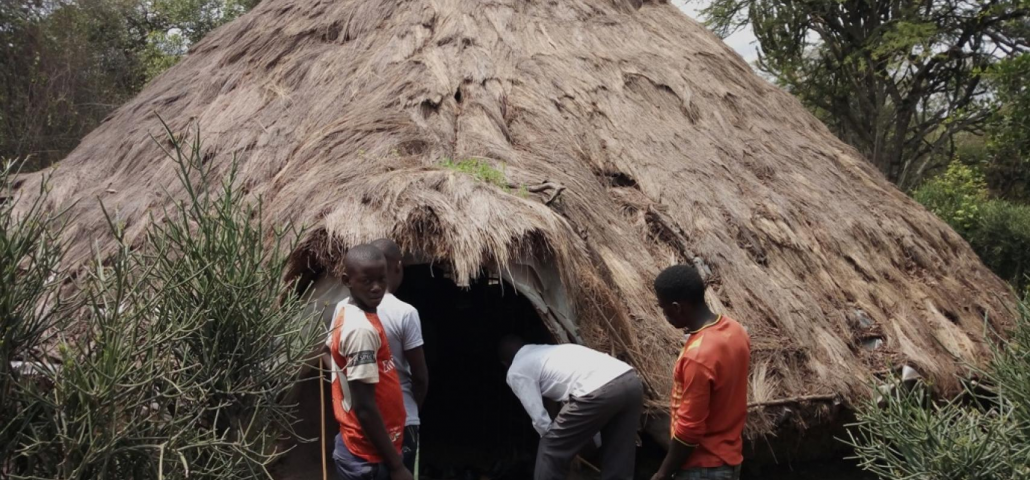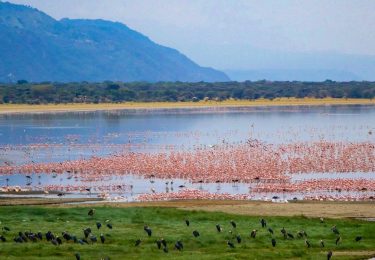- Home
- About Us
- Uganda safaris
- Long Safaris
- Short Safaris
- Day Short Safaris
- 1 Day Entebbe Botanical gardens weekend birding excursion
- I Day Entebbe City Tour
- 1 Day Jinja, Mabira, Ssezibwa Tour
- 1 Day Jinja Source of the Nile tour
- Lake Victoria Sunset Cruises
- 1 Day Kampala City Tour
- 1 Day Mabamba Shoebill Stork And Birding Tour
- 1 Day Makanaga Shoebill And Birding Trip
- 1 Day Ngamba Island Boat And Chimpanzee Excursion
- Other Tours
- Gorilla Safaris
- Uganda Gorilla safaris
- 4 Days Mgahinga Bwindi gorilla and golden monkey trekking safari
- 3 Days Mgahinga Gorilla trekking safari
- 5 Days Mgahinga Gorillas, Golden Monkey And Lake Bunyonyi Tour
- 5 Days Gorillas And Wildlife, L.Mburo, Bwindi and L. Bunyonyi
- 8 Days Wildlife, Gorillas, Golden Monkeys Trip
- 8 Days Gorillas Chimpanzee and wildlife Trekking Tour
- 9 Days Kidepo Valley National park and Bwindi Gorilla Safari. Wildlife and gorillas
- 11 Days Gorilla And Chimpanzee Tracking and wildlife Safari
- Rwanda Gorilla Safaris
- Uganda Gorilla safaris
- National Parks
- Kidepo Safaris
- Queen Elizabath Safaris
- Lake Mburo Safaris
- Mgahinga
- Mgahinga Gorilla National Park
- 3 Days Mgahinga Gorilla trekking safari
- 4 Days Mgahinga Bwindi gorilla and golden monkey trekking safari
- 5 Days Rwand-Uganda Gorilla, Golden Monkey trekking trip
- 5 Days Mgahinga Gorillas, Golden Monkey And Lake Bunyonyi Tour
- 8 Days Wildlife, Gorillas, Golden Monkeys Trip
- Our Blog
- Other Safaris
- Home
- About Us
- Uganda safaris
- Long Safaris
- Short Safaris
- Day Short Safaris
- 1 Day Entebbe Botanical gardens weekend birding excursion
- I Day Entebbe City Tour
- 1 Day Jinja, Mabira, Ssezibwa Tour
- 1 Day Jinja Source of the Nile tour
- Lake Victoria Sunset Cruises
- 1 Day Kampala City Tour
- 1 Day Mabamba Shoebill Stork And Birding Tour
- 1 Day Makanaga Shoebill And Birding Trip
- 1 Day Ngamba Island Boat And Chimpanzee Excursion
- Other Tours
- Gorilla Safaris
- Uganda Gorilla safaris
- 4 Days Mgahinga Bwindi gorilla and golden monkey trekking safari
- 3 Days Mgahinga Gorilla trekking safari
- 5 Days Mgahinga Gorillas, Golden Monkey And Lake Bunyonyi Tour
- 5 Days Gorillas And Wildlife, L.Mburo, Bwindi and L. Bunyonyi
- 8 Days Wildlife, Gorillas, Golden Monkeys Trip
- 8 Days Gorillas Chimpanzee and wildlife Trekking Tour
- 9 Days Kidepo Valley National park and Bwindi Gorilla Safari. Wildlife and gorillas
- 11 Days Gorilla And Chimpanzee Tracking and wildlife Safari
- Rwanda Gorilla Safaris
- Uganda Gorilla safaris
- National Parks
- Kidepo Safaris
- Queen Elizabath Safaris
- Lake Mburo Safaris
- Mgahinga
- Mgahinga Gorilla National Park
- 3 Days Mgahinga Gorilla trekking safari
- 4 Days Mgahinga Bwindi gorilla and golden monkey trekking safari
- 5 Days Rwand-Uganda Gorilla, Golden Monkey trekking trip
- 5 Days Mgahinga Gorillas, Golden Monkey And Lake Bunyonyi Tour
- 8 Days Wildlife, Gorillas, Golden Monkeys Trip
- Our Blog
- Other Safaris
BIGO BYA MUGENYI

LAKE EDWARD
August 8, 2024
BIGODI WETLAND SANCTUARY
August 8, 2024Bigo bya Mugenyi, an ancient earthwork complex, is strategically situated in the interlacustrine region of southwestern Uganda, within Mawogola county. Nestled on the southern shore of the meandering River Katonga, this extensive archaeological site boasts an intricate alignment of ditches and berms that have stood the test of time. The complex can be broadly categorized into two distinct elements, each with its unique characteristics. The first element is a long, irregular ditch and bank alignment, punctuated by multiple openings that effectively create an outer boundary. This boundary stretches from the eastern shores of River Katonga to the western edges of the Kakinga swamp, encompassing a vast area. Notably, towards its eastern end, the outer ditch branches further to the east, cleverly encompassing a nearby crossing of the Katonga River, showcasing the ingenuity of its ancient designers.
The second element consists of a central, interconnected group of four irregularly shaped ditch and bank enclosures, seamlessly connected to the Katonga river by a single ditch. This central hub is characterized by three prominent mounds, two of which are nestled within the enclosures, while the third is situated to the west, adding to the site’s mystique. The intricate design and purposeful placement of these earthworks suggest a sophisticated understanding of engineering, architecture, and possibly, ceremonial or defensive strategies, employed by the ancient civilization that once flourished here.
The enigmatic site of Bigo Bya Mugenyi, translating to “The Fort of a Stranger”, is a fascinating cultural treasure nestled in the heart of Uganda. This captivating name is a testament to the site’s mysterious origins, shrouded in the absence of historical records from the Bachwezi people who once inhabited this land. As a result, the site has become a focal point for social studies in primary schools, offering a unique window into the country’s rich cultural heritage. The natural beauty of Bigo Bya Mugenyi is equally striking, with vibrant wild flowers, lush savannah grasslands, and dense shrubs and woodlands, creating a serene and idyllic atmosphere. The air is filled with the soothing sounds of crickets, adding to the site’s enchantment. This captivating blend of history, culture, and natural beauty has solidified Bigo Bya Mugenyi as one of Uganda’s most cherished cultural gems, inviting visitors to explore and uncover its secrets.
Nestled in the heart of Mawogola county lies the enigmatic prehistorical site of Bigo Bya Mugenyi, a place steeped in mystery and intrigue. According to local lore, the Chwezi, also known as the Bachwezi, were the first inhabitants of this ancient fort, and indeed, the first people to settle in Uganda, dating back to the 11th to 16th century. Shrouded in an aura of mystique, the Bachwezi were said to possess extraordinary abilities, leaving behind a trail of wonder and awe. Their mysterious tendencies included vanishing into thin air, leaving behind only footprints on the rocks where they had stepped, and seemingly defying gravity by flying with the wind. The most recent and compelling evidence of their existence can be found at the nearby Amabere Ganyina Mwiru, another popular attraction in Fort Portal, where the Kigere – a series of ancient footprints – are believed to be the remnants of the Bachwezi’s ethereal presence. These enigmatic marks seem to corroborate the legend that the Bachwezi would disappear into the air, leaving behind only their footprints as a testament to their otherworldly abilities.
Bigo Bya Mugenyi boasts an impressive network of trench synergies, comprising two distinct systems that showcase the ingenuity of its ancient creators. The inner synergy consists of four interconnected openings that flow seamlessly into each other, forming a intricate labyrinthine structure. In contrast, the outer synergy stretches far and wide, trailing across the landscape to connect with the majestic River Katonga. The earthworks at this enigmatic fort are deeply rooted in the history of the ancient Chwezi people, a duo-rule dynasty that, although short-lived, left an indelible mark on the region. Spanning an impressive area of approximately 10 square kilometers, Bigo Bya Mugenyi is a testament to the advanced engineering and architectural skills of its long-lost builders. At the heart of the Chwezi governance system were two revered kings: King Wamala and King Ndahura, the latter of whom is believed to have been the last ruler of the Chwezi dynasty. This dual monarchy system was a hallmark of the Chwezi people’s unique approach to leadership, one that continues to fascinate historians and archaeologists to this day.
As tourists embark on their journey to the historic Bigo Bya Mugenyi, they first pass through Kabeho, a sacred site that serves as a threshold to the ancient fort. Here, visitors encounter a fascinating array of artifacts, including ancient spears, arrows, and shields, which were once wielded by guards who protected the camp before making their way to the revered Katonga River. Kabeho is also a place of spiritual significance, where tourists can fetch water for ritual cleansing, seeking protection and blessings from the gods before proceeding to the fort. This symbolic act of purification is deeply rooted in the local culture, demonstrating respect for the divine and the ancestors. The cultural site itself is comprised of several traditional grass-thatched huts, carefully constructed to shelter the keepers of the fort’s secrets. Adjacent to these huts lies a serene, fenced, and meticulously maintained sacred space, situated on elevated ground, where devotees seek blessings, wealth, and guidance from the gods. The enigmatic Chwezi people, believed to have been demigods, remain shrouded in mystery, their origins and fate unknown, leaving behind only their captivating legacy and the whispers of their divine presence.
Bigo Bya Mugenyi, once a thriving cultural hub, has been gradually reclaimed by the jungle, its ancient earthworks now harmoniously entwined with the surrounding wilderness. This symbiotic relationship has given rise to a unique phenomenon, where the site’s cultural significance is complemented by the presence of diverse and potentially dangerous wildlife. Visitors to the area have reported sightings of leopards, bushbucks, water bucks, duikers, and snakes, yet, surprisingly, these encounters have been eerily peaceful. Despite the presence of these wild animals, there have been no recorded attacks on humans, even when they have been spotted at close range. This extraordinary phenomenon is widely regarded as a testament to the divine presence that still permeates the area, as if the gods themselves are watching over the site and its visitors. The juxtaposition of cultural and natural wonders has transformed Bigo Bya Mugenyi into a truly enchanting destination, where the boundaries between human history and the natural world are blurred, and the essence of the divine is palpable.
In addition to exploring the ancient earthworks, tourists can immerse themselves in the vibrant culture of the local communities surrounding Bigo Bya Mugenyi. These communities offer a unique opportunity for visitors to engage with the warm and welcoming locals, who are eager to share their traditions and beliefs. One such belief is the notion that rain during a tourist’s visit is an ominous sign, foretelling misfortune. Visitors can also participate in traditional rituals, such as milk sacrifices, which take place in a large, communal hut adorned with calabashes and mats. Here, locals gather to offer prayers and libations, seeking blessings and protection from the gods. The Chwezi earthworks, it is believed, were originally excavated to safeguard the Chwezi Empire from the invading forces of the Luo people from Sudan, who posed a significant threat to their power and way of life. This rich cultural heritage, still palpable today, offers a fascinating glimpse into the region’s complex history and the resilience of its people.
HOW TO GET THERE
For those eager to uncover the secrets of Bigo Bya Mugenyi, the site is conveniently accessible, located just 60 kilometers from the bustling town of Sembabule. As a precautionary measure, tourists are required to register with the tourism police, stationed at a nearby outpost, a short distance from the site. This simple yet essential protocol ensures a safe and enjoyable experience for all visitors, while also helping to preserve the site’s integrity and cultural significance. By reporting to the tourism police, visitors can obtain valuable insights and guidance, setting the stage for a memorable and enriching exploration of Bigo Bya Mugenyi’s ancient earthworks and captivating history.





